27 March 2017
Cleaved, boudinaged, folded Edinburg Formation southwest of Lexington
Posted by Callan Bentley
Examine these two photos, and ask yourself: what am I seeing here?
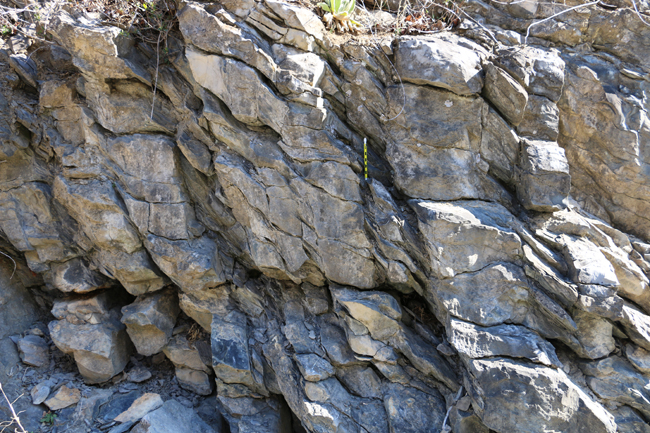
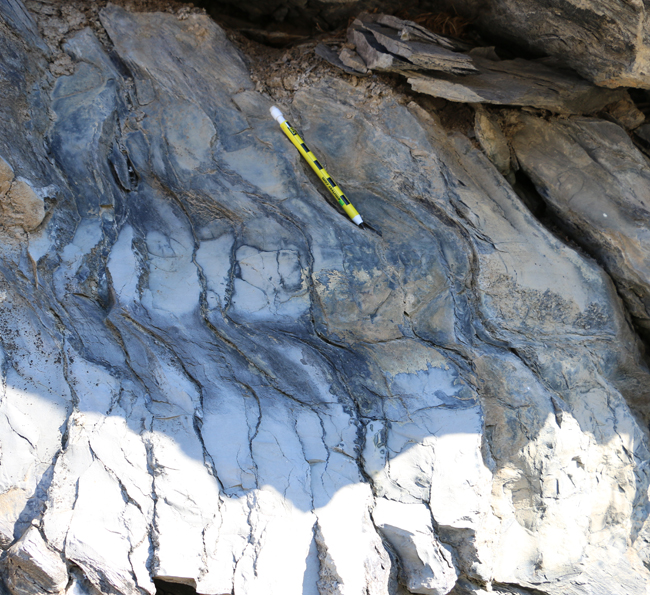
Got your answers?
Let’s take a closer look, one image at a time:

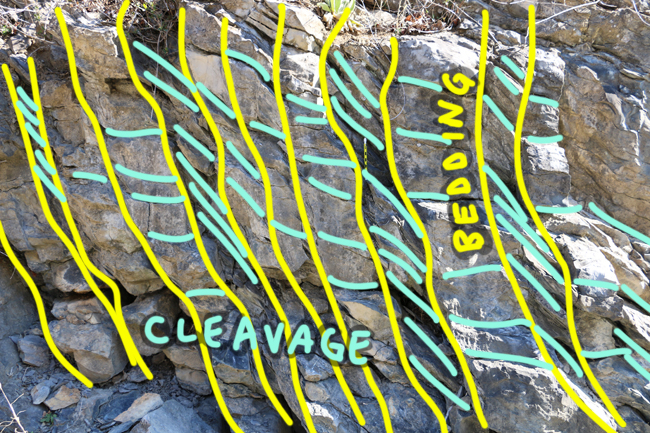
And now the second one:

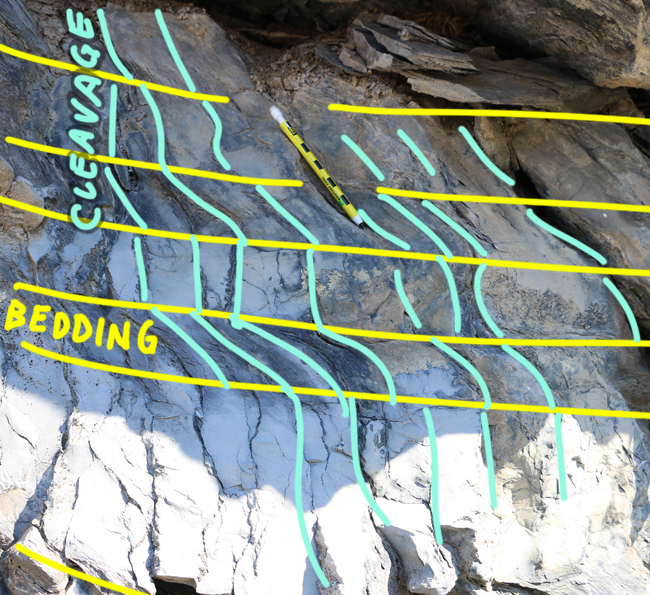
These are limestones and shales of the Edinburg Formation, an Ordovician-aged unit in Virginia’s Valley & Ridge Province that records the transition from passive margin sedimentation (a clean carbonate bank that prevailed over much of North America since the Cambrian) into the clastic signal deriving from the late Ordovician Taconian Orogeny. The limestone layers are fairly massive, and even include nice details like this fossil:

I visited these outcrops last week on the advice of my colleague Jeff Rahl of Washington & Lee University in nearby Lexington. Here’s a detail of the site from the Geology of Rockbridge County (Wilkes, et al., 2007):

So why are the strata cleaved? When the Alleghanian Orogeny happened, in the Pennsylvanian into the Permian, these strata were squeezed. As a result, then folded, cleaved, and broke. Look at this fine outcrop, for instance:
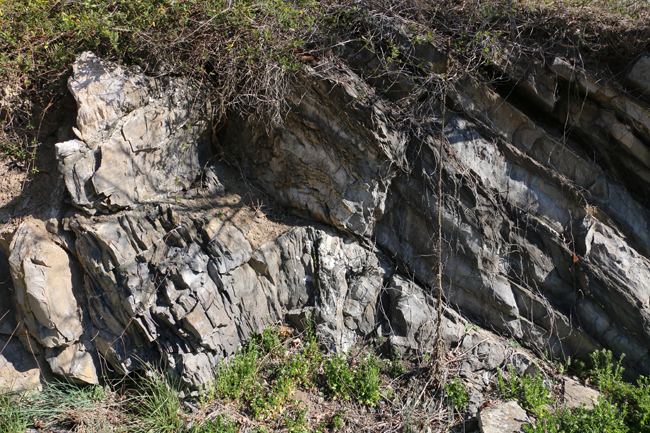
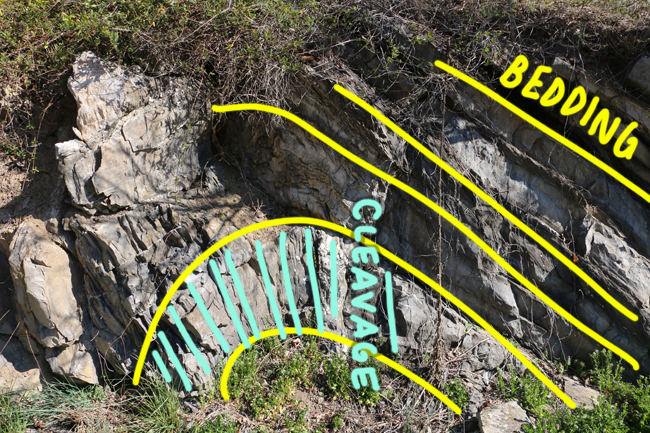
Now zoom in to the center, to that shadowy realm just above the “cleavage” annotations:

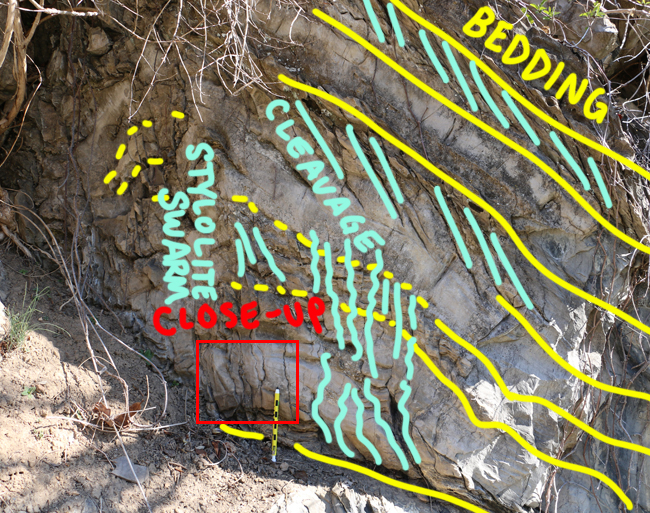
Zooming in more, to the red “close-up” box:

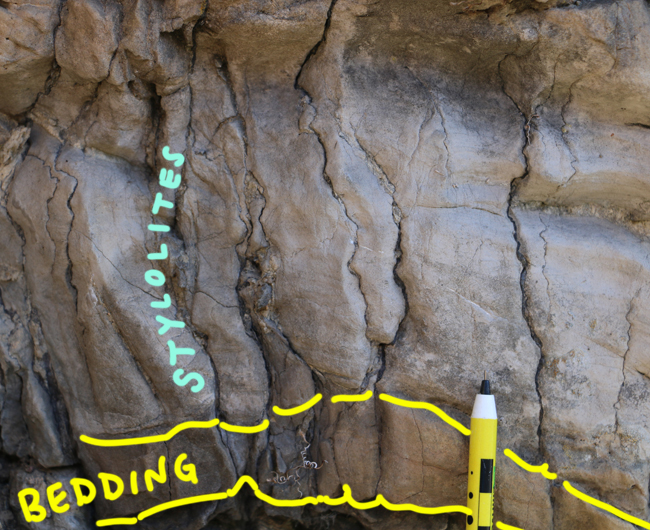
Stylolites and cleavage have a lot in common: both are the result of pressure solution, the propensity of certain minerals like calcite to go into solution when they are put under high pressure. Cleavage is more “distributed” through the body of the rock, while stylolites are “pressure solution localization” seams. Clay minerals help catalyze the dissolution of calcite, so cleavage is much better developed in the shale layers than in the limestones. The cleavage/stylolite swarms “refract” as they cross from one lithology to the next, as these next images show:
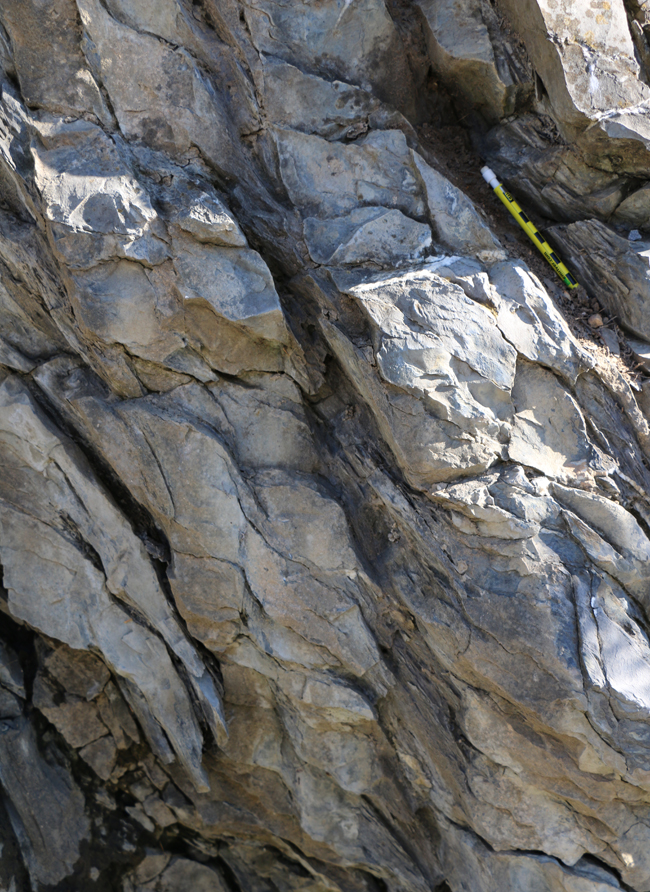
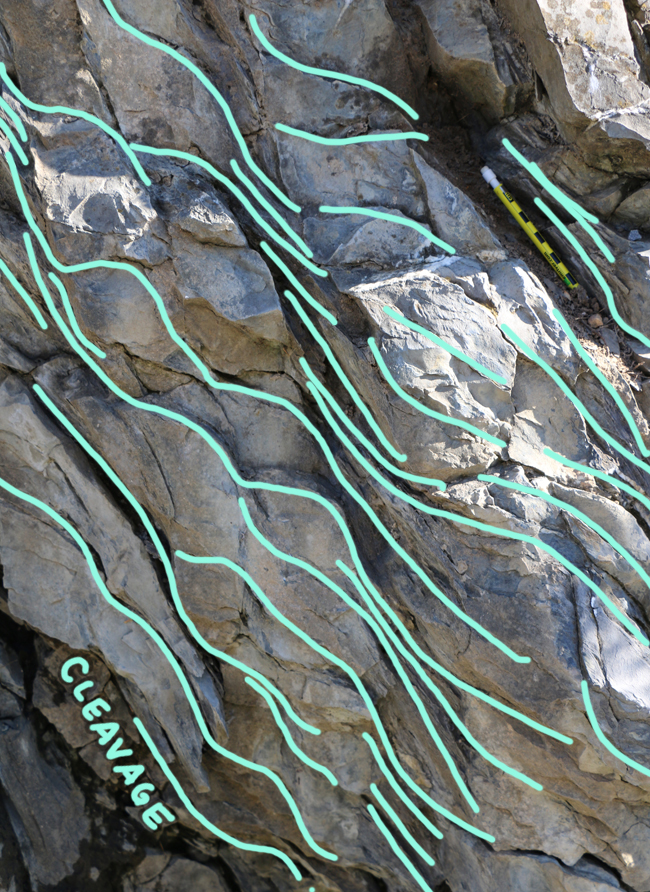
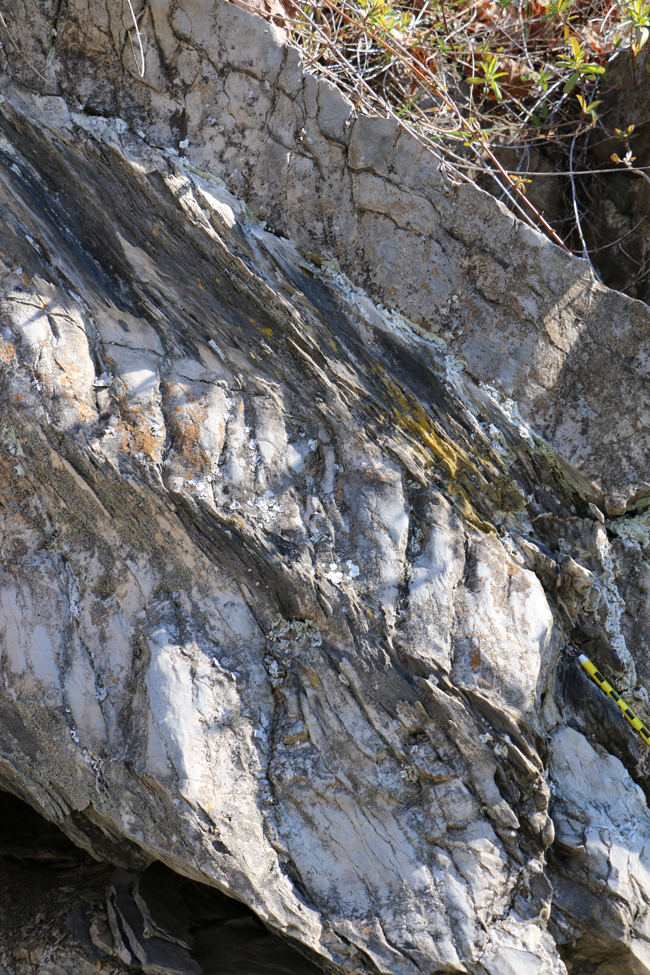
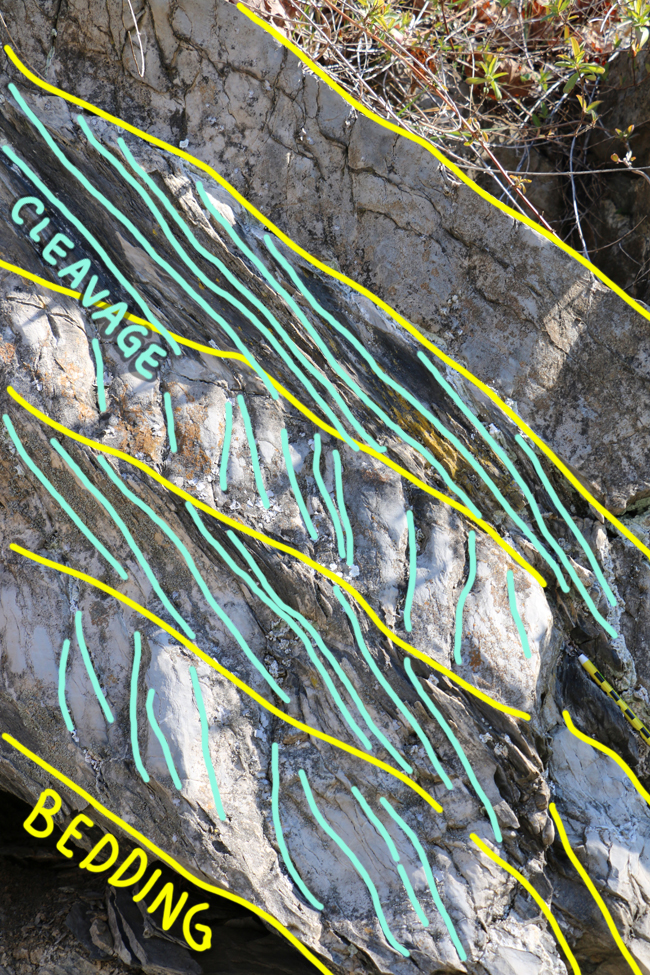

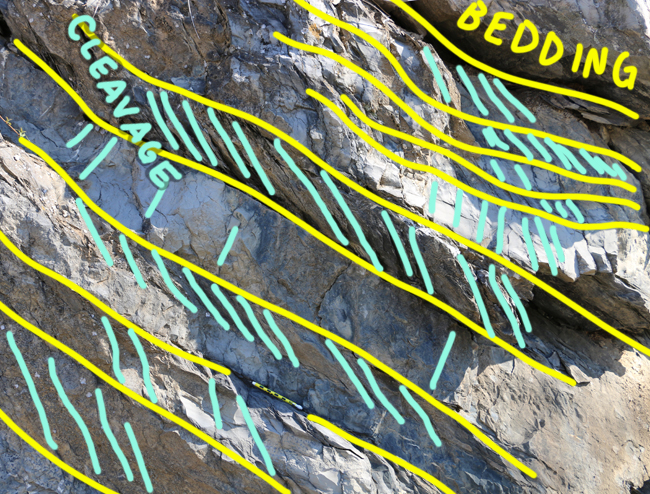
Here’s the crest of another anticline, showing a “fan” of cleavage orientations around it:
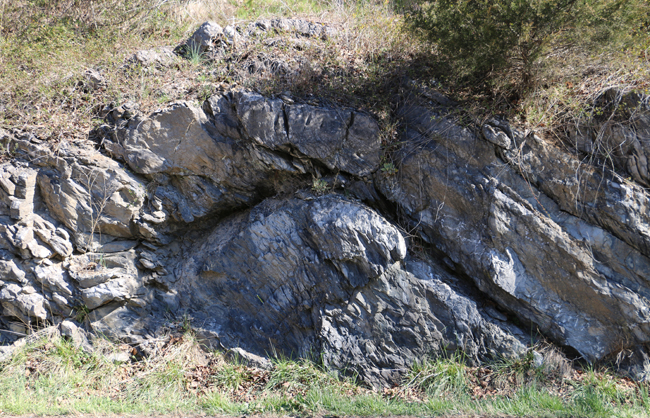
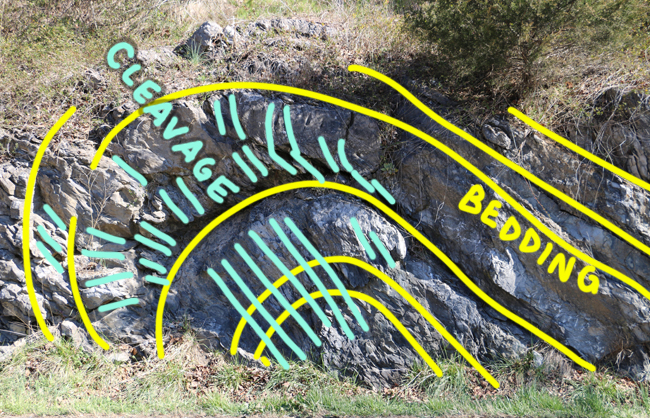
The left versus right sides of this fold illustrate an important concept: the relationship of bedding and cleavage in the detection of overturned beds. That brings us back to the image we started off this blog post with:

Here, bedding and cleavage both dip to the right side of the photo, but bedding is steeper (close to vertical) and cleavage is more shallow. That indicates these beds are (ever so slightly) overturned.

In contrast, here too the two planar features both dip to the right, but now cleavage is more steeply inclined, and bedding has the shallower dip. These beds are right-side-up:


Anyhow, zoom in on the core of this fold to see the cleavage:


Though the beds seen here aren’t overturned, the asymmetry of the fold is readily apparent: it’s steeper on the left (west), and more gently-inclined on the right (east).
There was also plenty of boudinage to be seen at the site. The limestone layers broke into sausage-link-shaped chunks and the “necks” between these chunks (boudins) were filled with calcite veins (white) and shale pooching in from neighboring strata.
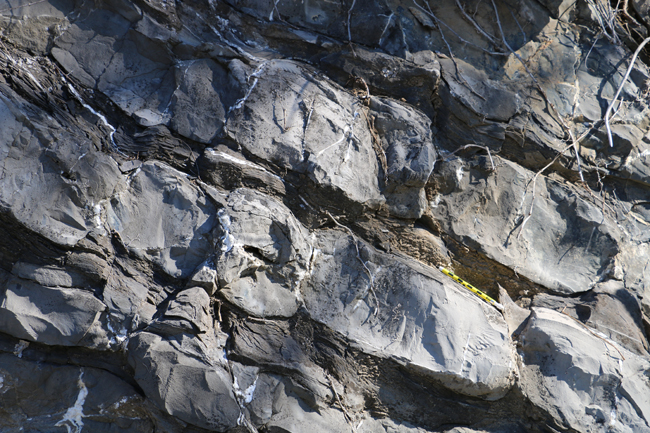
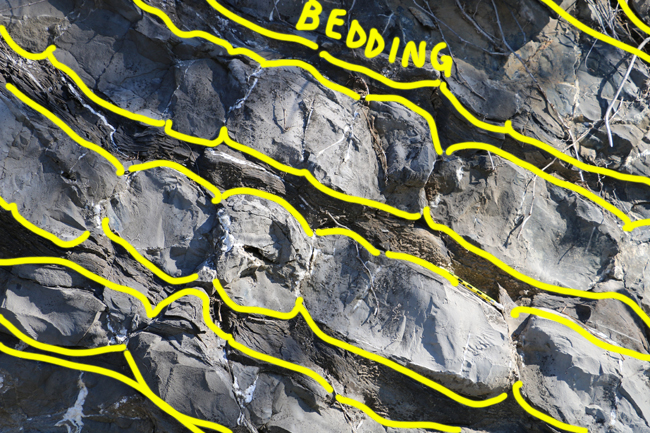


Zoom in to the lower middle:
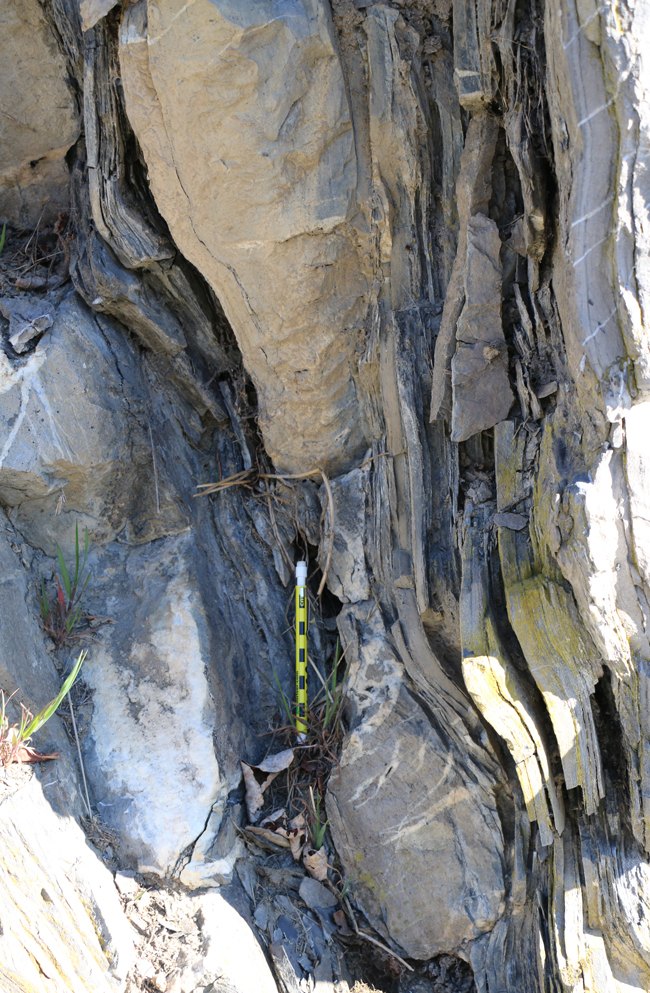
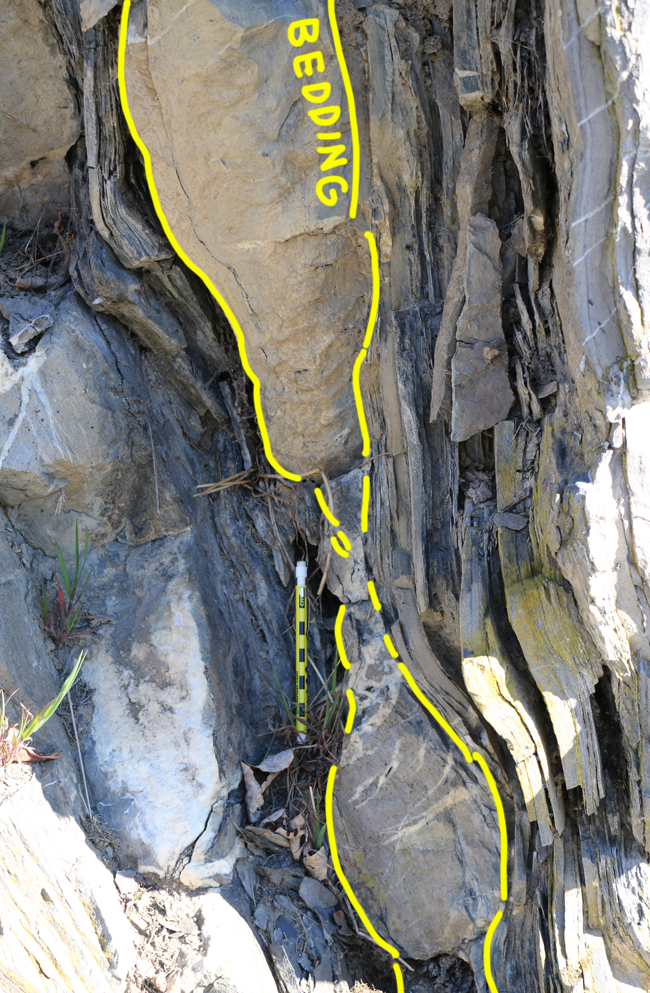
Zoom in to the upper right:


Another example, a short distance away, in a more “incipient” stage, but still showing differential weathering concentrated on the fractures that might have evolved into boudin necks:

One more example of boudinage of a limestone layer, showing very brittle deformation in the limestone (shards, surrounded by white calcite veins) , with gentle inflection of neighboring shale:

Let’s close out this post with one more lovely example. Are these beds overturned or not?

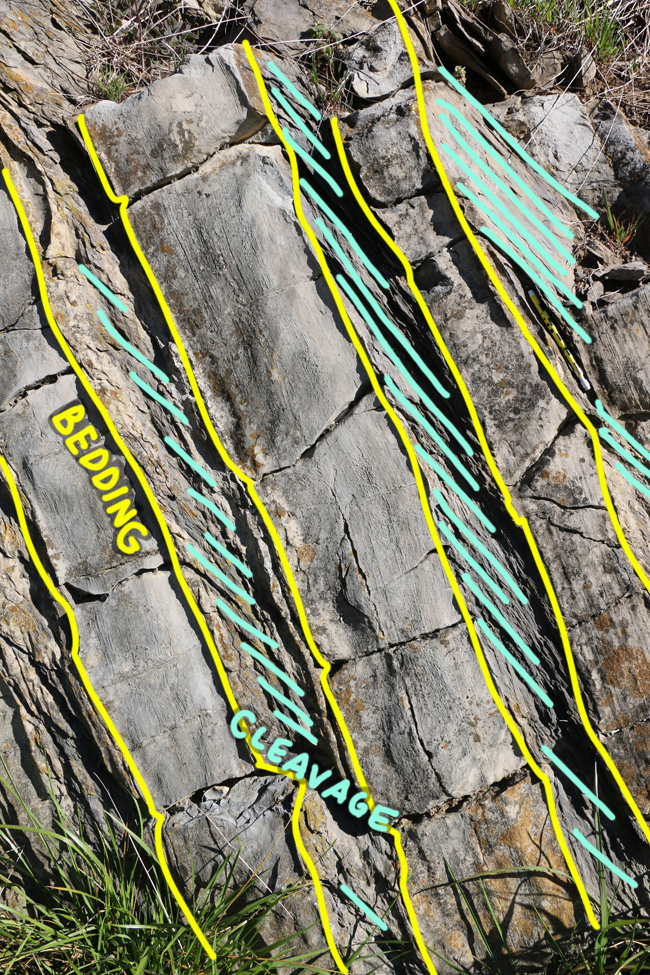
Post your answers in the comments if you want credit!


 Callan Bentley is Associate Professor of Geology at Piedmont Virginia Community College in Charlottesville, Virginia. He is a Fellow of the Geological Society of America. For his work on this blog, the National Association of Geoscience Teachers recognized him with the James Shea Award. He has also won the Outstanding Faculty Award from the State Council on Higher Education in Virginia, and the Biggs Award for Excellence in Geoscience Teaching from the Geoscience Education Division of the Geological Society of America. In previous years, Callan served as a contributing editor at EARTH magazine, President of the Geological Society of Washington and President the Geo2YC division of NAGT.
Callan Bentley is Associate Professor of Geology at Piedmont Virginia Community College in Charlottesville, Virginia. He is a Fellow of the Geological Society of America. For his work on this blog, the National Association of Geoscience Teachers recognized him with the James Shea Award. He has also won the Outstanding Faculty Award from the State Council on Higher Education in Virginia, and the Biggs Award for Excellence in Geoscience Teaching from the Geoscience Education Division of the Geological Society of America. In previous years, Callan served as a contributing editor at EARTH magazine, President of the Geological Society of Washington and President the Geo2YC division of NAGT.